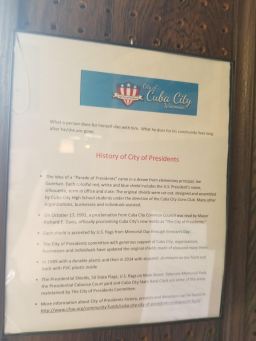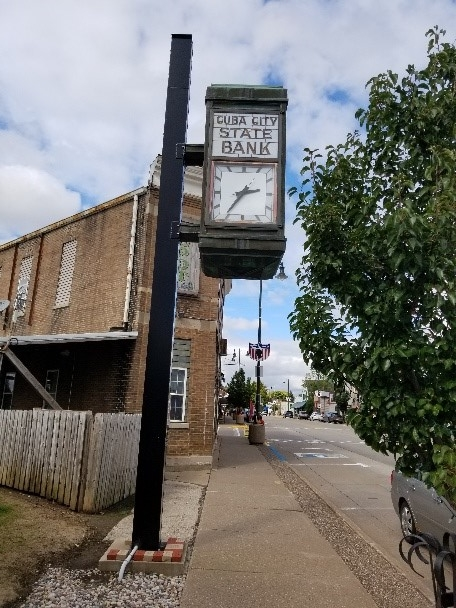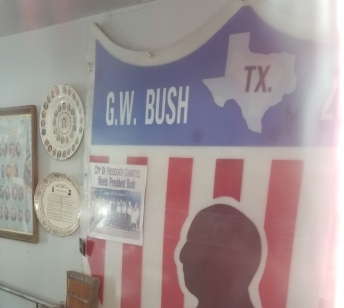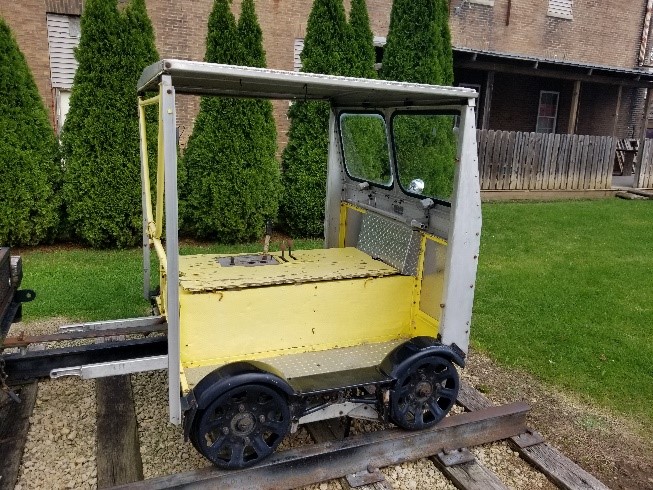
The Midwest is blessed with a fascinating legacy of religious structures created primarily by German immigrants. . . . the real architectural gems stemming from the immigrants may be the incredible religious grottoes of the Midwest, which are considered among the most important folk or “outsider” art environments in the United States.”
Peyton Smith, Grottos of the Midwest: Religion and Patriotism in Stone
Yes, it feels strange to use the word “grotto” for structures basically built of stone mixed with concrete then embedded with sparkling glass, shells, and whatever else the builder could find, but let’s just go with it for a moment… and go to one of these grottoes. They are some of the most fascinating specimens of folk art in the area. A grotto (or cave) in this sense means the inside of a shrine, and they became popular about 100 years ago in the Midwest.
My favorite Driftless Region grotto is just off of US 151 in Dickeyville, Wisconsin, about ten miles from the bridge across the Mississippi River into Iowa. It sits on the grounds of the Holy Ghost Parish, right on the main drag in Dickeyville. Entrance to the Shrine of the Blessed Virgin is free, though donations are appreciated. As the Grotto approaches 100 years of age, it requires more than a little bit of upkeep.

Typically most grottoes are built around a main shrine, usually to the Virgin Mary, and this one is no different. Inside the building you see at the top, you’ll find the 25 feet tall, 30 feet wide and 25 feet deep shrine… yes, it’s large, but it isn’t the size that draws most people’s attention. It is all the shiny items placed around the object of adoration.

Along with Mother Mary holding baby Jesus, you’ll find a collection of objects ranging from stalagmites that seem to be growing up from the floor at her feet, and coral, shells, rocks from around the country, and many other items. This is the handiwork of Father Matthias Wernerus, who was Pastor of the Parish from 1918 to 1931, and built the different shines from 1925-1930. Mother Mary’s shrine was finished in 1929.

Father Matthias apparently began collecting things, asked his congregation members to collect things, and before long, he even had Ford Motor Company in Detroit sending him building materials! (Henry Ford sent him those round balls that used to be on top of the Model T stick shifts. They appear most prominently in the Sacred Heart shrine behind the main church.) The church website notes that six or seven truckloads of thirty tons each came from the Dakotas, from Iowa, and from nearby Wisconsin quarries.

The brochures available at the entrance states that it is “a creation in stone, mortar, and bright colored objects” from all over the world, including “colored glass, gems, antique heirlooms of pottery or porcelain, stalagmites and stalactites, sea shells of all kinds, starfish, petrified sea urchins and fossils, and a variety of corals plus amber glass, agate, quartz, ores such as iron, copper and lead, fool’s gold, rock crystals, onyx, amethyst and coal.” Some items, like the large amount of petrified wood, stalagmites, stalagtites and the huge crystal quartz points set out in front of the Blessed Virgin’s feet, would not be obtainable today
If you are Catholic, you might want to learn more about the church and its parish or visit their gift shop. In this piece, I’m addressing the Grotto as an inspired work of folk art, but I do not presume to be an expert on Catholic shrines.

Try to go on a sunny day, and you can get some truly amazing pictures. Maybe Dickeyville can consider the Grotto’s little reflecting balls their version of Chicago’s Bean. Because of the orientation of the building, its much easier to catch the sun reflecting off the back of the main shrine than off the front. In fact, to get the front of the Grotto in the sun, you really have to be there just before high noon and ideally in the late spring or summer! I’ve been told that shrines are supposed to be constructed so that the sun never shines directly inside of them… which means it rarely shines on the front door, either. The very top picture, taken just before noon near the summer solstice, is the closest I’ve ever come to getting the front illuminated by the sun. On the other hand, it is easy to get beautiful sun-lit photos of the Tree of Life which adorns the back side of the main shrine.

The grotto has several other works of art. To the left, you’ll see the Sacred Heart shrine, which reproduces an altar erected in Chicago at Soldiers’ Field during the 1926 International Eucharistic Congress. The rock for the four pillars came from New Mexico, and they’re banded in a combination of colored glass and shifter balls from old Model T Fords! (Don’t ask me why the sun can shine on this Corpus Christi altar and not on the Blessed Virgin… as I’ve said, I am no expert on this type of sacred art.)
As you can imagine, one of the most popular secular activities at this sacred site is trying to identify the different components used in the building! The garden and birdhouses in front of the gift shop are similarly decorated with bright, shiny, and often antique objects.

Construction started 
Construction ended 
Shells, stones… 
Dyed crystal points 
Faith, Hope, Charity… 
the greatest of these is Love
As folk art, most of Dickyville’s Grotto is delightful. There are several other shrines, though I’ve pictured the main ones here. A final shrine, not to God but to patriotism, I personally avoid… not because I’m not patriotic, but because it seems devoted to an outdated sort of “patriotism” celebrating, among others, Christopher Columbus. I understand that this was the view of European Catholic immigrants 100 years ago and part of what Father Matthias celebrated, but since I do not, I’ve chosen to not represent that part of the Grotto in this article.
Instead, I’ll end with some other photos of things I’m happy to celebrate–among them, Wisconsin deer!–then end with a photo of the Grotto in winter.


Tell us about your favorite place in the Driftless Region!





















